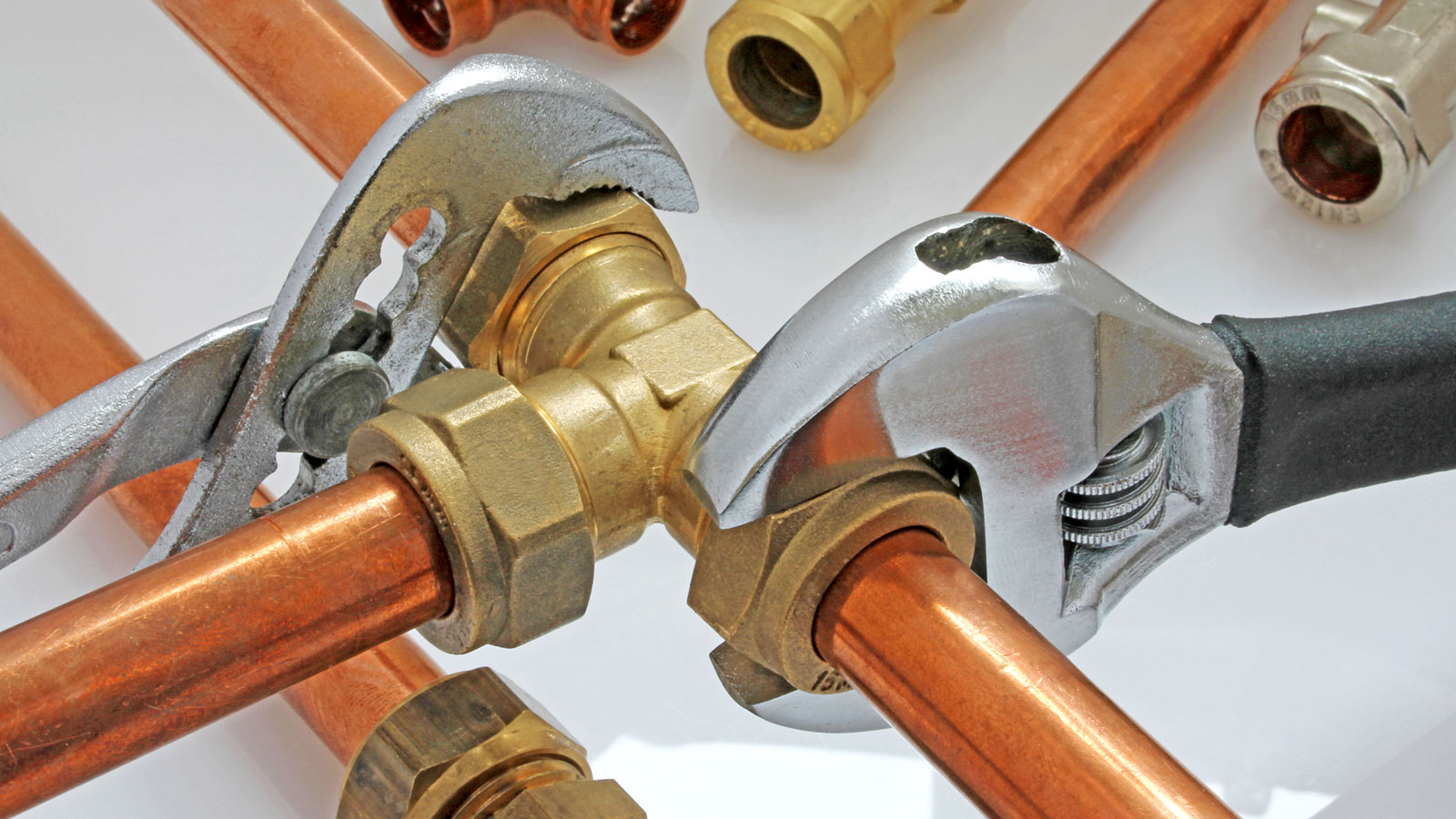Not sure of the difference between quarter turns, spirals and winders? We explore the types of staircase you can choose for your home
Selecting the right type of staircase isn't just about how it looks. It's about understanding which one will fit and get you safely from one floor to another
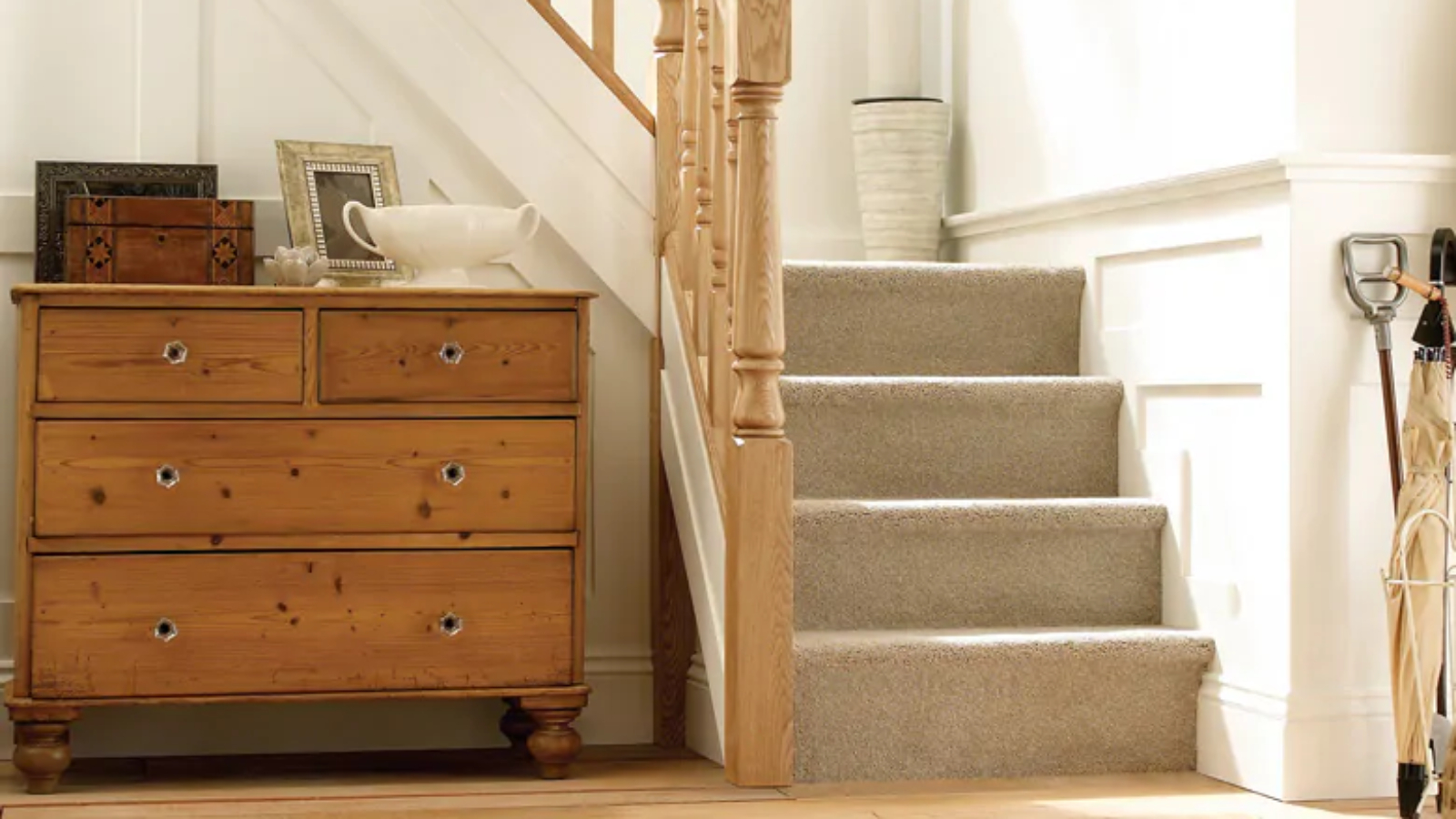
If you're building or renovating a house, or even adding a loft conversion, you'll need to understand the types of staircases available and where each type is suitable for use.
Choose incorrectly, and you could find yourself with no feasible route between the different floors within your home. Or, with an unsafe staircase design that's not fit for purpose.
In this article we'll outline the main types of staircase you can pick from, show examples of how they look and share expert advice on what types of home and location they suit the most.
Choosing a staircase
Before we go into the different types of staircase, it's not just the shape that will need to form part of your decision making process.
“Choosing the right type of staircase can feel like a minefield," agrees Kenny Macfarlane, Managing Director at Handrail Creations. "It needs to be safe, durable, and visually consistent with the rest of the space. There’s a huge array of designs, materials and added bespoke features to choose from."
On the upside, there isn't always a right or wrong answer about how they look, but there is an importance to making sure your staircase meets the rules set out in Approved Document K of the building regulations.
“There’s no such thing as a 'best' choice for staircase configurations and layouts," confirms Lucie Levesley, director at Jackson Woodturners. "The best choice will individual to each project and depend on a few key factors such as the floor and landing space available, size of the room, style chosen and safety considerations."
Bring your dream home to life with expert advice, how to guides and design inspiration. Sign up for our newsletter and get two free tickets to a Homebuilding & Renovating Show near you.
"When it comes to staircase design, form of course follows function, but that doesn’t mean you have to compromise on style," adds Mike Edwards, sales and project developer at Complete Stair Systems.
That said, while style and look matter, it starts with the basics and, "there are four classic staircase configurations to consider," explains Mike. "Straight, quarter turn, half turn, and spiral. Each offers its own advantages depending on the layout and character of your home."
Bespoke options are also available in the form of split or curved staircases for self builds where space and size maybe less of an issue.
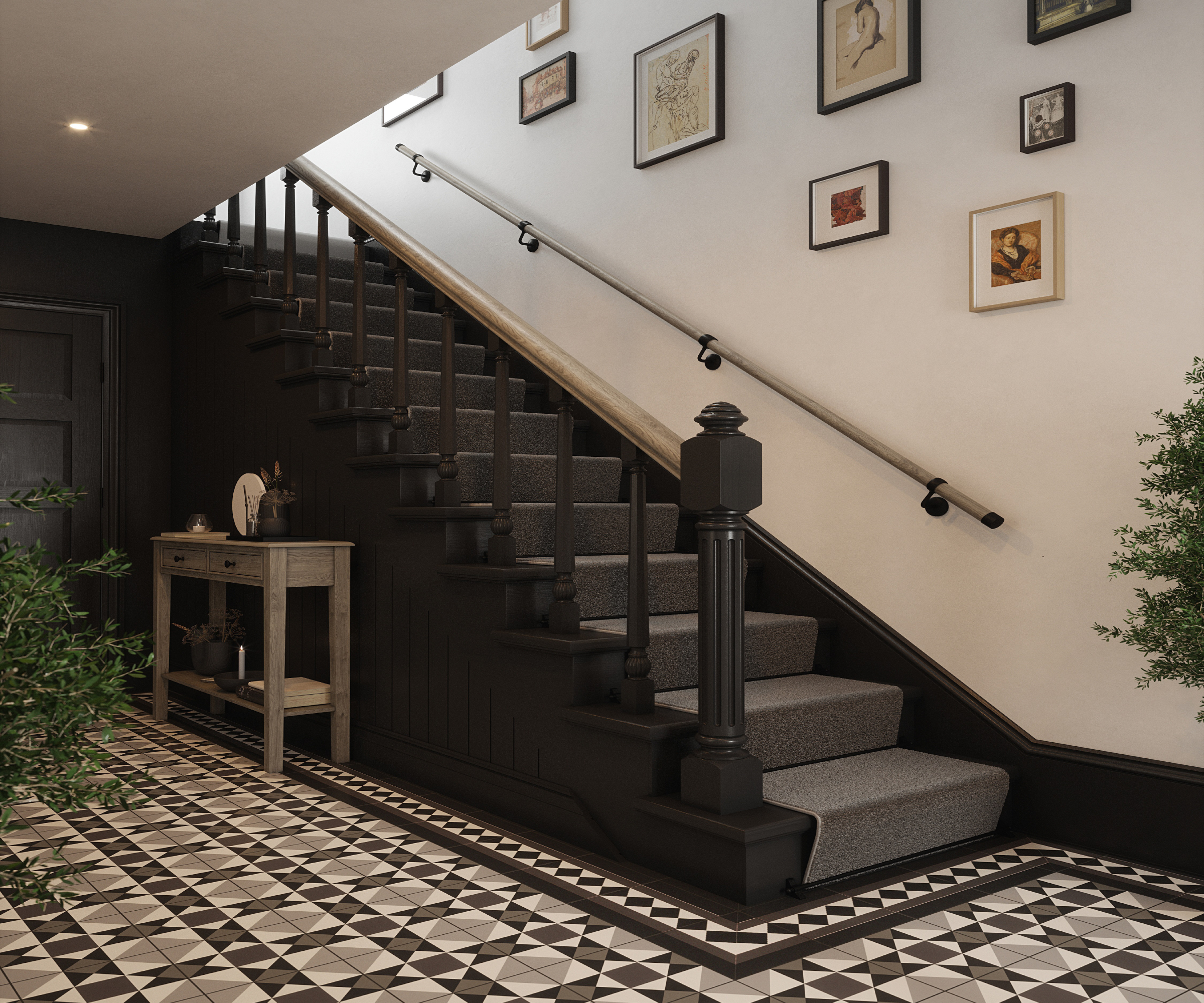

Kenny Macfarlane is the Managing Director at Handrail Creations. Kenny has worked on some of the most prestigious construction projects in the UK, and is now focused on building a young, enthusiastic and technically fascinating team at the Handrail Creations HQ in Bolton. Handrail Creations is the UK’s leading handrail and balustrade specialist, designing, manufacturing, and installing bespoke hardwood handrails for residential and commercial projects of any size. With an award-winning team, in-house design studio, advanced CNC facilities, and expert installation crews, the company delivers seamless, precision-crafted handrails from concept to completion.

Lucie joined the family business having previously spent time working within the retail space developing expertise in design, marketing and buying. Lucie’s role involves buying and sourcing new products. She also ensures that Jackson Woodturners’ product ranges are up to date on the latest interior design and decor trends.
Mike Edwards has been a sales and project developer at Complete Stair Systems since 2013, a company specialising in spiral staircases, modern staircases, and open stairs, giving Mike a vast amount of knowledge and understanding of what type of staircase best suits a home.
Types of staircases
1. Straight staircases
Straight staircases are, as the name suggests, stairs that start on one floor and go upwards in one straight line to the next floor. There will be no breaks, turns or small landing areas halfway up and they are a simple but effective way of moving through a house.
"Straight flight stairs are ideal for period properties with narrow hallways," says Mike Edwards. "Their linear design allows for efficient vertical movement while preserving valuable space on both the landing and the hallway below."
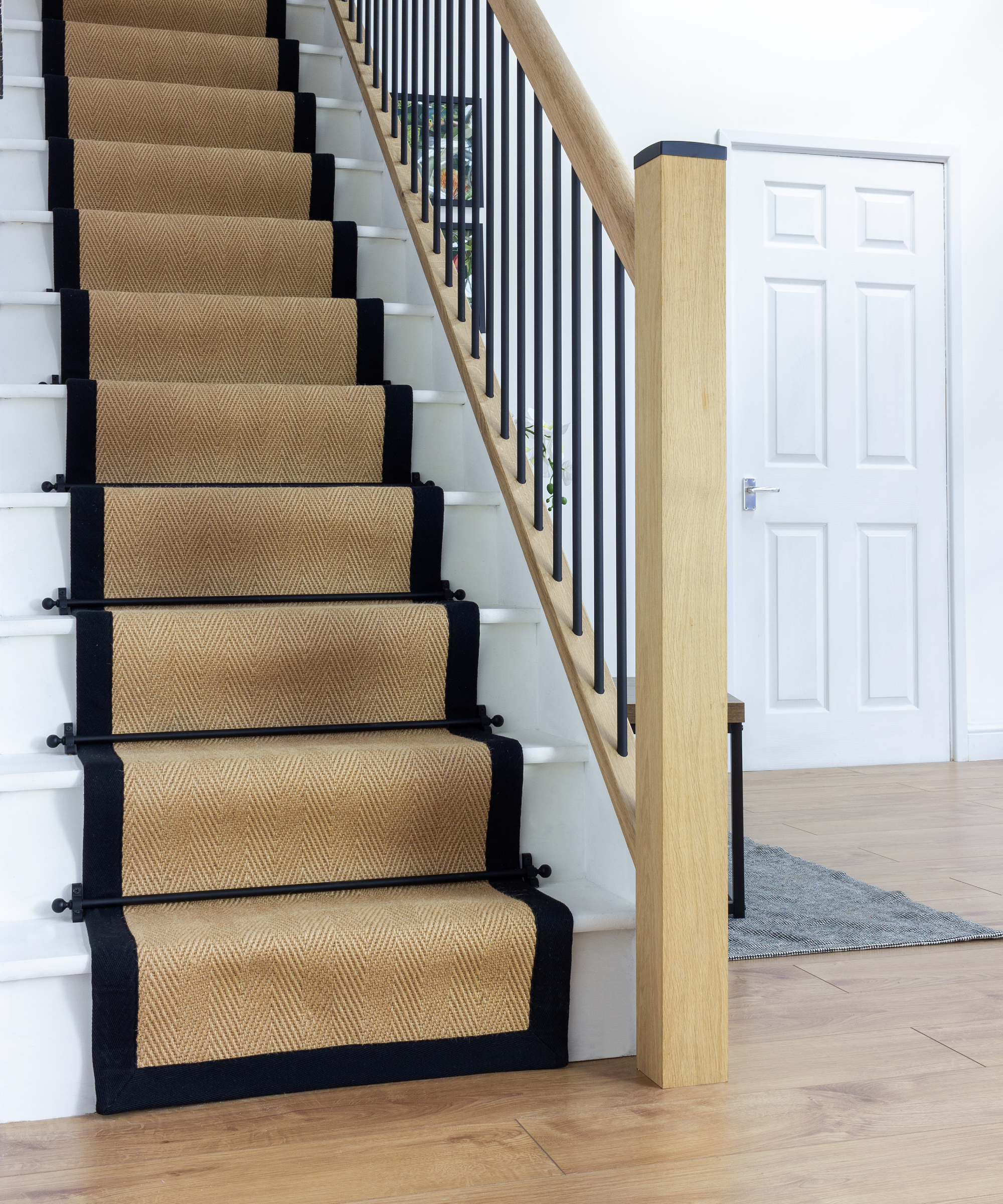
2. Quarter turn and half turn
Where straight staircases aren't an option, the most common solution is to introduce one or more turns into the design. These can be referred to a number of different ways.
Quarter turn or L-shaped for staircases that have one turn at 90°, or half turn or U-shaped for those staircases that have a full 180° return in them.
But where do they work best?
"Quarter turn and half turn staircases are particularly useful in homes where space is at a premium, or the layout presents challenges," advises Mike Edwards. "A quarter turn staircase, for instance, can occupy the same footprint as a straight flight, but the change in direction helps guide movement more naturally through the home, making it perfect for redirecting traffic flow to a more desirable entry or exit point."
"L-shaped or quarter-turn stairs with a landing that creates a 90° turn are also great for dividing spaces," says Kenny Macfarlane, "while a U-shaped staircase that uses a landing to create a 180-degree turn makes a practical choice for navigating tight corners. Staircases need to be personalised to maximise functionality and aesthetic appeal, and U-shaped stairs can do both in narrow hallways, too."
However, while they can reduce the staircase height, they may require more space in other ways, adds Lucie Levesley.
“L or U-shaped staircases have a bend which can help reduce the amount of linear space needed, but may require more space in terms of width."
That said, they also have an additional benefit she explains, stating how, "the bend at the corners can also act as a rest spot, acting as a safety feature for reducing the impact from falls.”
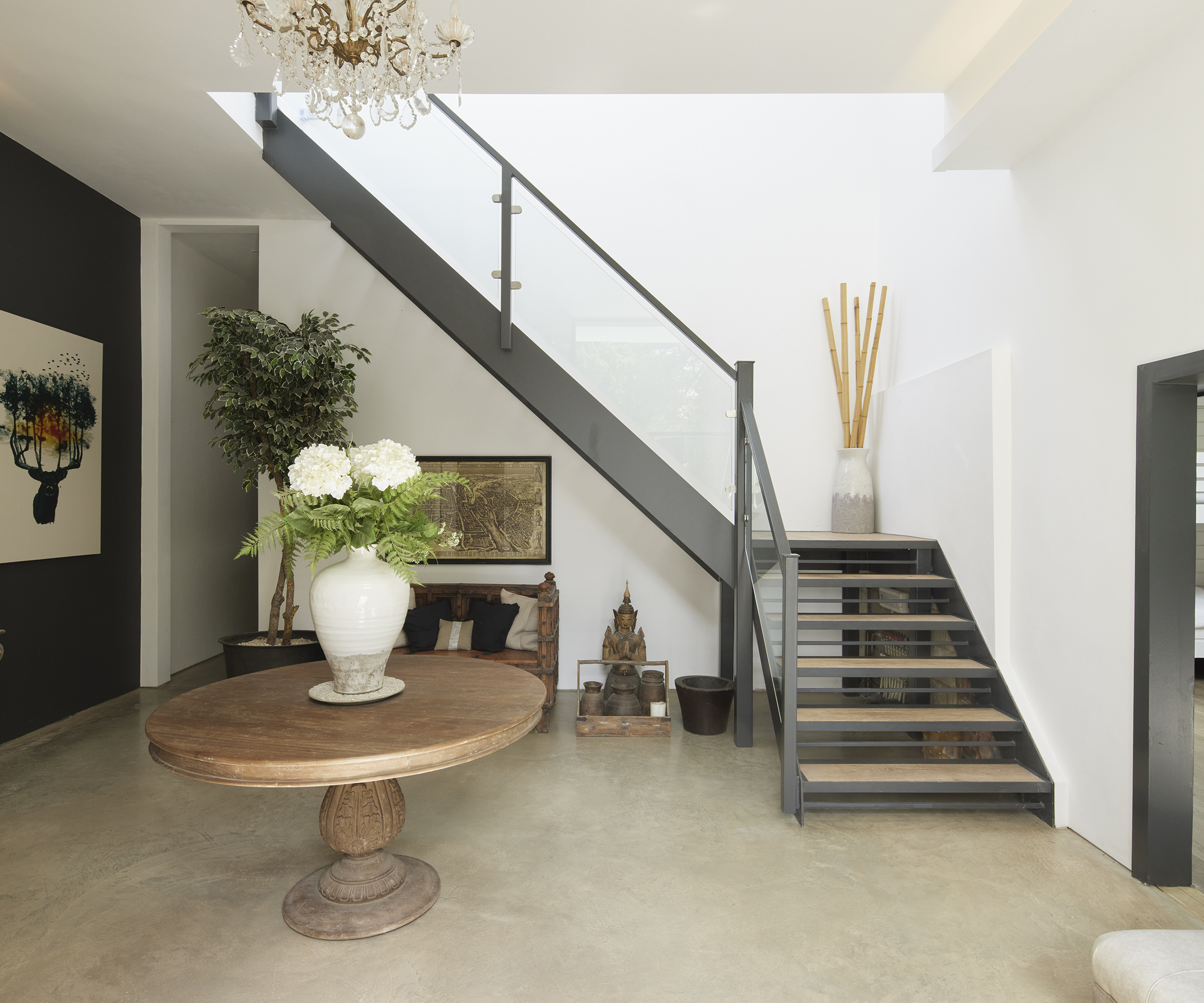
3. Winder or spiral staircases
Unlike the other types of staircases, winder or spiral staircases aren't linear in nature, using curves instead to get the user from A to B. However, less common than the other types of staircases, they are generally used for accessibility or aesthetic reasons.
“Winder or spiral staircases are often used for basement and loft conversions, where landing space is limited," says Lucie Levesley.
"Spiral stairs can be a space-efficient option," agrees Kenny Macfarlane, "as this design works with the space you have. Winder staircases in particular are able to change direction. The triangular or wedge-shaped treads are used instead of a landing, making it a fantastic way to save space with its compact design."
However, despite their striking design, they are often less practical. "These staircases can be less accessible for some," advises Lucy Levesley. "They are often steeper with narrower treads, which can be more challenging for users."
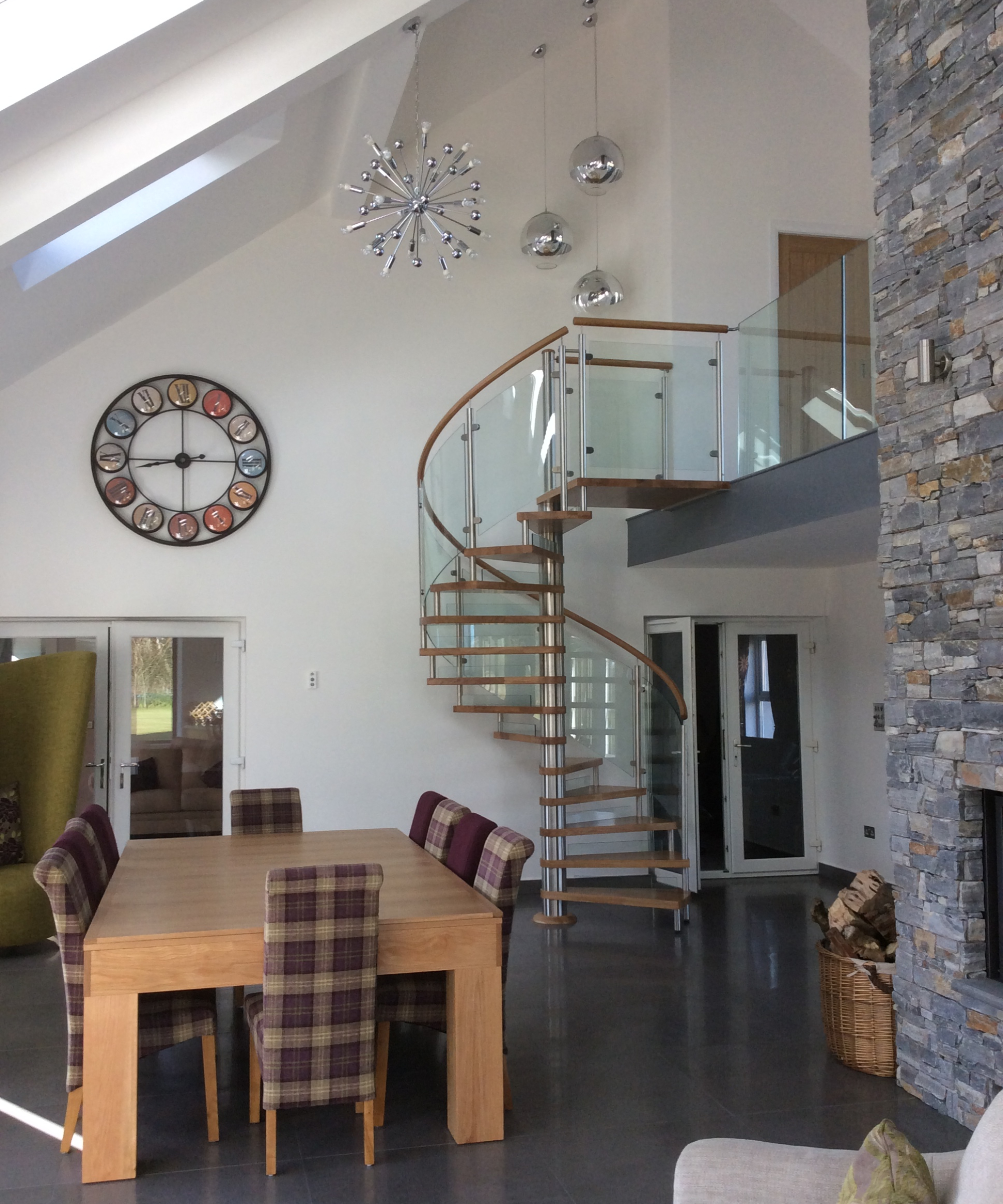
Bespoke staircases
Of course, if your hallway design is on the larger scale and there are restrictions regarding height or width, then you also have the option to create a more bespoke staircase that befits your entrance.
“A staircase is a handshake when entering a home, which is why many people opt for a more grandiose designs for aesthetics," says Kenny Macfarlane.
"Curved stairs offer this elegance and grand first impression, although they are usually more suitable for large homes and big commercial properties where luxury is the top priority.
"Split stairs are also popular in luxurious, large properties," he adds. "They start with one wide set of steps that splits off into two smaller sets of flights going in opposite directions, and are popular where there’s plenty of space. They can create an impressive focal point in the main entrance of the home.”
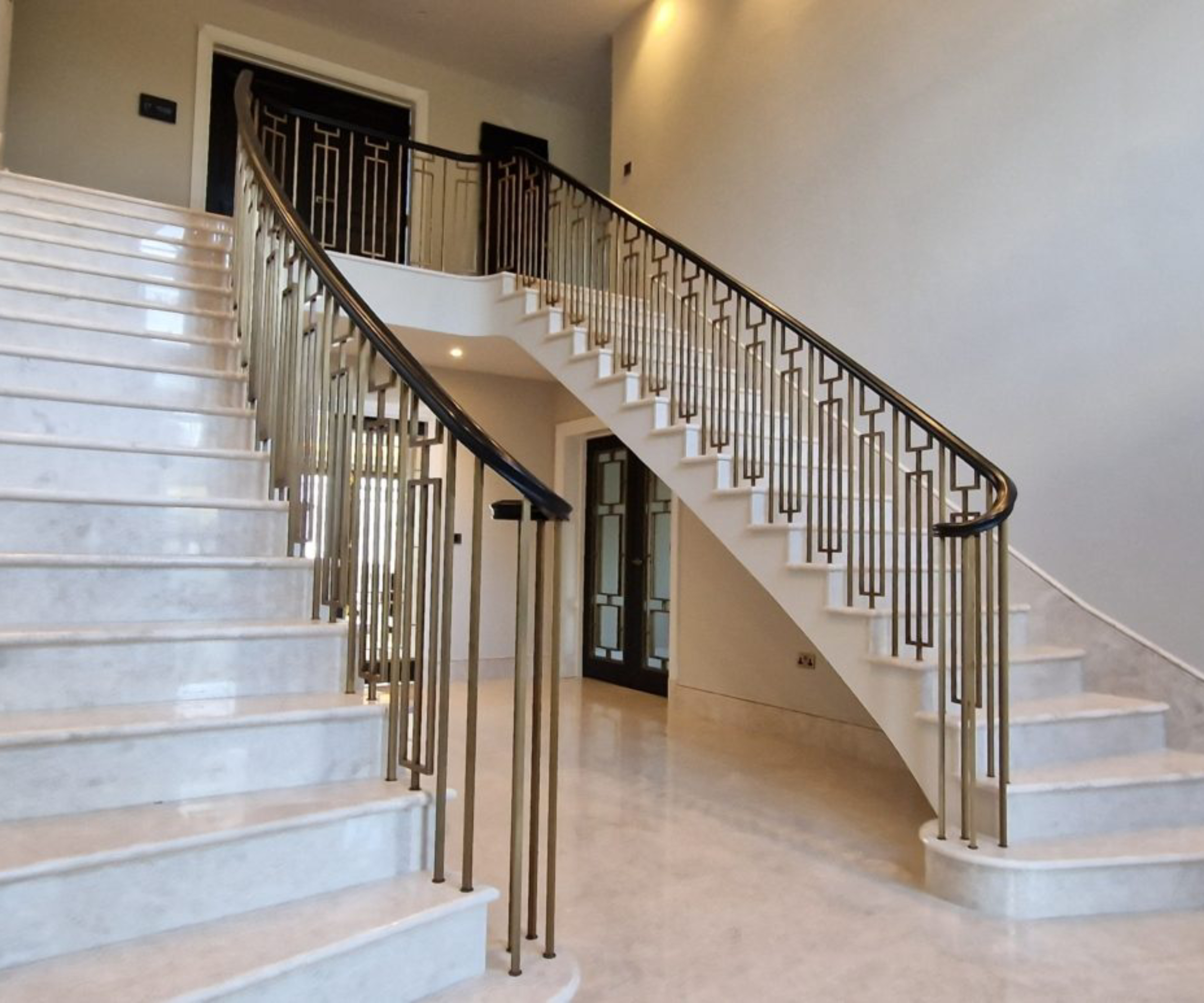
Shop staircase kits and handrails
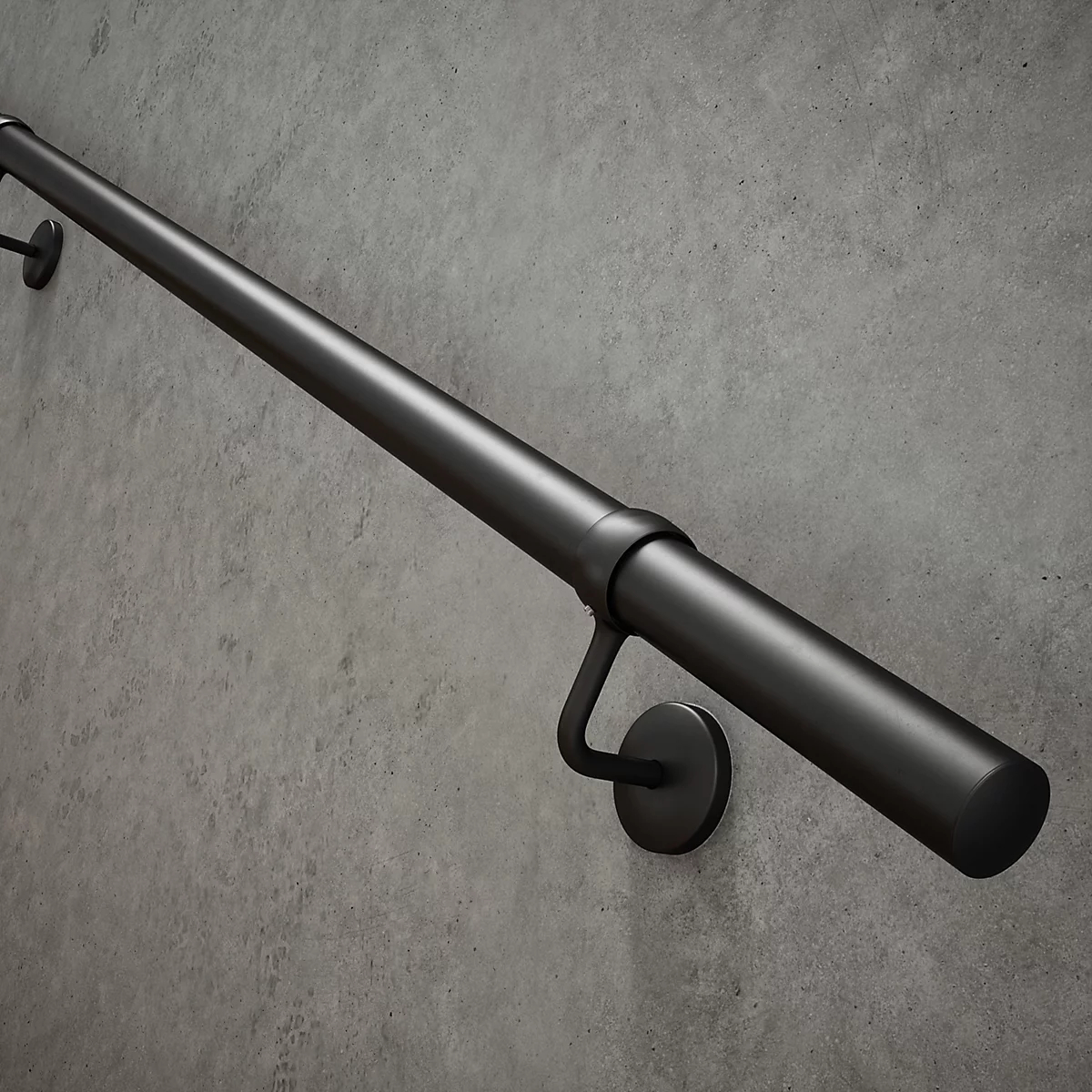
A 3.6m long handrail that's easy to assemble without need to drill the rails. Everything you need to install it comes securely in one box
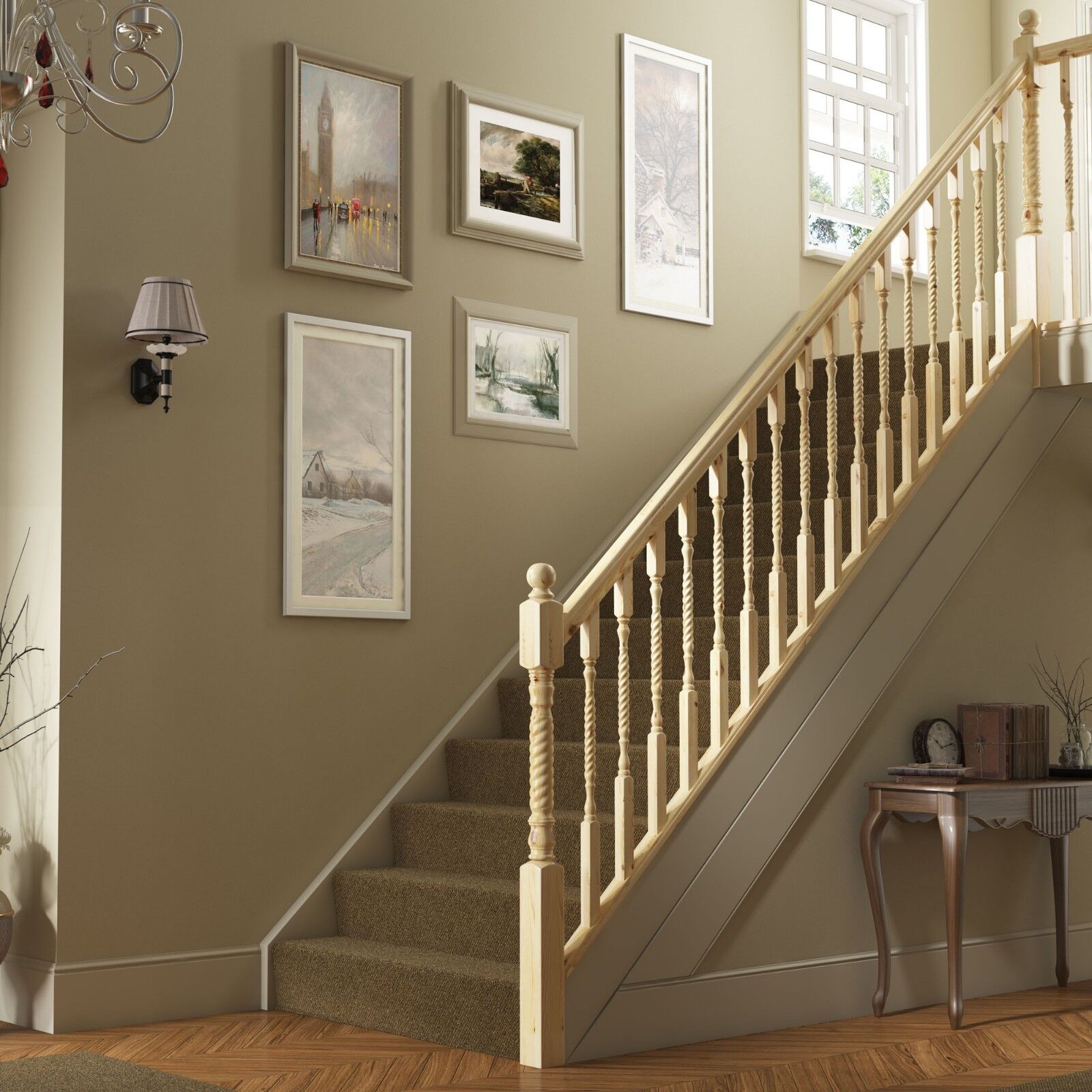
An all-in-one stair kit that contains everything required to update your existing stair area, stress-free
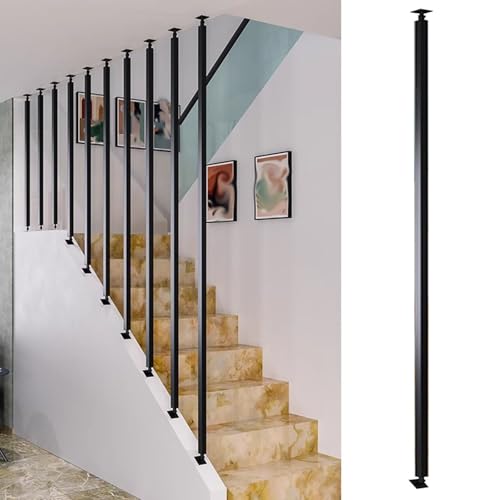
Add safety and a modern touch to your staircase with these adjustable metal stair spindles
Once you've established the type of staircase you need, there are then are also a myriad of aesthetic decisions to make regarding their style. Open or closed risers? Floating staircase or wooden staircase? Will you have painted stairs or tiled treads? For more inspiration, you can head to our staircase ideas article where you'll find over 40 different ideas to choose from.
Kenny Macfarlane also suggests thinking of your handrail as a starting point as it impacts both the look and functionality of every type of staircase.
“Handrails have a huge impact on the aesthetic appeal as well as the functionality of the staircase and impact the overall feel of the space. Wooden handrails are among the most popular; they can be carved, sanded, stained or painted to fit the aesthetic vision in a way metal can’t.
"Metal handrails are typically found in modern homes and commercial properties, and there are multiple options for metal handrails, with the most popular elements being stainless steel, wrought-iron and brass. Selecting the final finish depends on the usage and aesthetic one wants to achieve," says Kenny.
And, as final words of advice, as staircases are an integral part of your hallway and landing ideas, make sure that your staircase lighting ideas are both safe and stylish, and the hallway flooring you choose will work well with your final staircase design too.

Sarah is Homebuilding & Renovating’s Assistant Editor and joined the team in 2024. An established homes and interiors writer, Sarah has renovated and extended a number of properties, including a listing building and renovation project that featured on Grand Designs. Although she said she would never buy a listed property again, she has recently purchased a Grade II listed apartment. As it had already been professionally renovated, she has instead set her sights on tackling some changes to improve the building’s energy efficiency, as well as adding some personal touches to the interior.
